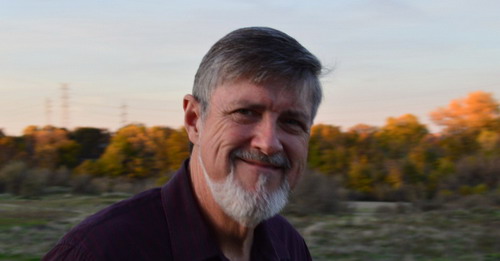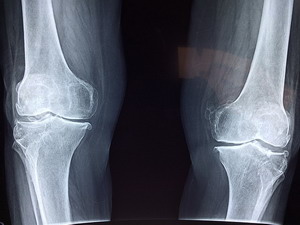 A week ago I came across a study that showed that the use of anti-inflammatory medications such as NSAIDs (ibuprofen, acetaminophen, aspirin) for joint pain actually causes arthritis. This seemed crazy at first since joint pain is probably the most common reason for using these drugs. But after thinking about this for
a minute, it made perfect sense. A week before that I came across an article that said essentially the same result came from using steroid drugs. So even though all these drugs work great for stopping the acute pain in our joints, the bigger reality was telling us that in stopping the acute pain we end up with chronic destruction of the joints.
A week ago I came across a study that showed that the use of anti-inflammatory medications such as NSAIDs (ibuprofen, acetaminophen, aspirin) for joint pain actually causes arthritis. This seemed crazy at first since joint pain is probably the most common reason for using these drugs. But after thinking about this for
a minute, it made perfect sense. A week before that I came across an article that said essentially the same result came from using steroid drugs. So even though all these drugs work great for stopping the acute pain in our joints, the bigger reality was telling us that in stopping the acute pain we end up with chronic destruction of the joints.
 The first thing I thought of in this regard was the effects of the disease leprosy. Leprosy stops one from feeling pain, kind of like pain-relieving drugs do but by a different mechanism. Leprosy results in the loss of fingers and toes because the patient can not feel when they injure their digits. They can't feel
infection when it sets in either. Without those pain signals, the body does not know to initiate healing. This starts making sense with arthritis. When we injure our joints, they hurt and swell up as the body responds to the injury to heal it. The swelling is the body bringing more blood to the injured area making the blood vessels leaky to move repair cells into the space. First, special white blood cells called macrophages (which literally means 'big eaters' in Greek) move in to clear
out the debris from the injury. While this is happening, another cell type called fibrocytes lay down structural reinforcement fibers to hold the damaged area together. If the blood flow has not been compromised then stem cells can move in and build new replacement tissues. If it has been compromised then the fibrocytes keep laying down fibrous tissue until a scar forms.
The first thing I thought of in this regard was the effects of the disease leprosy. Leprosy stops one from feeling pain, kind of like pain-relieving drugs do but by a different mechanism. Leprosy results in the loss of fingers and toes because the patient can not feel when they injure their digits. They can't feel
infection when it sets in either. Without those pain signals, the body does not know to initiate healing. This starts making sense with arthritis. When we injure our joints, they hurt and swell up as the body responds to the injury to heal it. The swelling is the body bringing more blood to the injured area making the blood vessels leaky to move repair cells into the space. First, special white blood cells called macrophages (which literally means 'big eaters' in Greek) move in to clear
out the debris from the injury. While this is happening, another cell type called fibrocytes lay down structural reinforcement fibers to hold the damaged area together. If the blood flow has not been compromised then stem cells can move in and build new replacement tissues. If it has been compromised then the fibrocytes keep laying down fibrous tissue until a scar forms.
 The classic signs of inflammation we learn in school are redness, swelling, heat, and pain. The redness, swelling, and heat are from the increased blood flow and leakiness while the pain is caused by inflammatory chemicals that are released by the damaged tissues. Most commonly these chemicals are of a class called
prostaglandins formed by a group of enzymes called cox-2. It is the formation of these prostaglandins that our pain-killing drugs block by turning off the cox-2 enzymes.
The classic signs of inflammation we learn in school are redness, swelling, heat, and pain. The redness, swelling, and heat are from the increased blood flow and leakiness while the pain is caused by inflammatory chemicals that are released by the damaged tissues. Most commonly these chemicals are of a class called
prostaglandins formed by a group of enzymes called cox-2. It is the formation of these prostaglandins that our pain-killing drugs block by turning off the cox-2 enzymes.
 The understanding we need to glean here is that it is the formation of these pain-causing chemicals that trigger the healing process. When you stop the pain chemicals, you inhibit the healing. This process takes place in many different ways in the body. Since I had gone to the gym this morning
and was sitting here feeling post-workout soreness, I searched the internet to find out whether NSAIDs block muscle building. Sure enough, they do. When you work out for strength training, a certain amount of muscle damage occurs. This damage produces prostaglandins that hurt. This hurt triggers the repair and growth process which builds more muscle. It does not need to hurt a lot. In fact, a lot of pain actually inhibits the process. One recent study looked at sprint training for overall
metabolic health improvements. This study demonstrated that our “more is better” thinking is completely wrong. In fact, the optimal improvements in health occurred with just two 20-second sprints every two to three days. More training produced fewer results. For an average person that would mean a couple of 100-meter dashes twice a week is ideal for metabolic health.
The understanding we need to glean here is that it is the formation of these pain-causing chemicals that trigger the healing process. When you stop the pain chemicals, you inhibit the healing. This process takes place in many different ways in the body. Since I had gone to the gym this morning
and was sitting here feeling post-workout soreness, I searched the internet to find out whether NSAIDs block muscle building. Sure enough, they do. When you work out for strength training, a certain amount of muscle damage occurs. This damage produces prostaglandins that hurt. This hurt triggers the repair and growth process which builds more muscle. It does not need to hurt a lot. In fact, a lot of pain actually inhibits the process. One recent study looked at sprint training for overall
metabolic health improvements. This study demonstrated that our “more is better” thinking is completely wrong. In fact, the optimal improvements in health occurred with just two 20-second sprints every two to three days. More training produced fewer results. For an average person that would mean a couple of 100-meter dashes twice a week is ideal for metabolic health.
 In athletic research, it has been found that common pain-killing drugs actually enhance performance when taken before an event. They block pain that would otherwise inhibit performance. This matches our typical expectations. We take a drug to block inflammation so that we can perform better in the here and now.
We ignore the adaptive response and healing response that pain and inflammation give us in the long run. I find this fascinating how perfectly this matches human behavior when it comes to growing up in life. We run away from pain and seek comfort which keeps us from having to grow and adapt to life. We avoid maturation because it involves the pain of experiencing that our existing coping skills are not good enough, so we seek to shut off that uncomfortable feedback from life. Frequently we do
this with easily available drugs like sugar, alcohol, weed, food excess, and a host of other interesting psychological techniques.
In athletic research, it has been found that common pain-killing drugs actually enhance performance when taken before an event. They block pain that would otherwise inhibit performance. This matches our typical expectations. We take a drug to block inflammation so that we can perform better in the here and now.
We ignore the adaptive response and healing response that pain and inflammation give us in the long run. I find this fascinating how perfectly this matches human behavior when it comes to growing up in life. We run away from pain and seek comfort which keeps us from having to grow and adapt to life. We avoid maturation because it involves the pain of experiencing that our existing coping skills are not good enough, so we seek to shut off that uncomfortable feedback from life. Frequently we do
this with easily available drugs like sugar, alcohol, weed, food excess, and a host of other interesting psychological techniques.
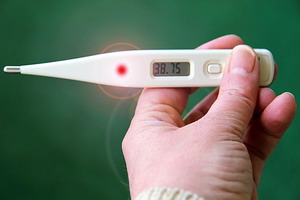 The medical world is shaped by the pharmaceutical industry and what it can supply. There are lots of different drugs used to block pain and inflammation, but nothing that actually helps support the real goal of inflammation — healing. These drugs are necessary when the inflammation has gone overboard. A good
example is how the body will create a fever to fight infection, but too much of a fever and the patient might die. Health is a constant balancing act between inflammation and calming processes in the body. We are always seeking that Goldilocks perfect medium spot. The pharmaceutical industry only has anti-inflammatory drugs, so everything told to us is all about stopping inflammation. Nobody looks at the positive benefits of just the right amount of inflammation. We fall for this lopsided
perspective because we want to avoid any pain at all, even when it is necessary for healing.
The medical world is shaped by the pharmaceutical industry and what it can supply. There are lots of different drugs used to block pain and inflammation, but nothing that actually helps support the real goal of inflammation — healing. These drugs are necessary when the inflammation has gone overboard. A good
example is how the body will create a fever to fight infection, but too much of a fever and the patient might die. Health is a constant balancing act between inflammation and calming processes in the body. We are always seeking that Goldilocks perfect medium spot. The pharmaceutical industry only has anti-inflammatory drugs, so everything told to us is all about stopping inflammation. Nobody looks at the positive benefits of just the right amount of inflammation. We fall for this lopsided
perspective because we want to avoid any pain at all, even when it is necessary for healing.
 Okay, so how do we know if our inflammation is good or bad? The simple answer is looking at acute inflammation compared to chronic inflammation. Acute inflammation is generally the good kind. It is how your body heals itself. Chronic inflammation is generally bad because it means the body is failing in its healing
process. There are specific steps involved in the healing of damaged tissue. Each step takes a specific amount of time depending on the extent of the injury. A paper cut does not take as much time to heal as a deep laceration. It might hurt just as much, but there is far less tissue to replace to effect healing. Even the most traumatic injury generally only takes six to eight weeks to heal. The exception to this is nerve injuries. They can take up to two years to heal. If there is some condition
going on that is preventing the area from healing, these steps may not proceed normally, and chronic pain sets in. Arthritis is a good example of chronic pain. Because the cartilage in joints has no blood supply, it can not go through the normal steps of healing. Damaged cartilage frequently goes into a chronic state of inflammation as a result. Autoimmune diseases are another example of healing gone awry. Instead of healing the tissues, the white blood cells attack the tissues creating ongoing
chronic pain and inflammation.
Okay, so how do we know if our inflammation is good or bad? The simple answer is looking at acute inflammation compared to chronic inflammation. Acute inflammation is generally the good kind. It is how your body heals itself. Chronic inflammation is generally bad because it means the body is failing in its healing
process. There are specific steps involved in the healing of damaged tissue. Each step takes a specific amount of time depending on the extent of the injury. A paper cut does not take as much time to heal as a deep laceration. It might hurt just as much, but there is far less tissue to replace to effect healing. Even the most traumatic injury generally only takes six to eight weeks to heal. The exception to this is nerve injuries. They can take up to two years to heal. If there is some condition
going on that is preventing the area from healing, these steps may not proceed normally, and chronic pain sets in. Arthritis is a good example of chronic pain. Because the cartilage in joints has no blood supply, it can not go through the normal steps of healing. Damaged cartilage frequently goes into a chronic state of inflammation as a result. Autoimmune diseases are another example of healing gone awry. Instead of healing the tissues, the white blood cells attack the tissues creating ongoing
chronic pain and inflammation.
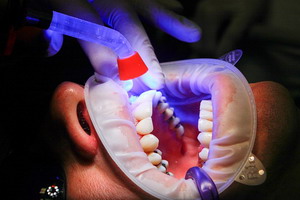 Another source of chronic pain is experienced by the body when it does not have the necessary materials to repair its tissues. A simple example is bleeding gums. You might have had this problem for years, setting up a home for all sorts of nasty bacteria. The underlying problem might be something as simple as a
vitamin C deficiency. Bleeding gums is a classic sign of scurvy; the disease is caused by vitamin C deficiency. Aching bones caused by osteoporosis are another example. In this case, we have both a potential mineral and nutrient deficiency combined with an autoimmune component. Additionally, a nutrient we don't usually think of, weight-bearing exercise, adds to osteoporosis.
Another source of chronic pain is experienced by the body when it does not have the necessary materials to repair its tissues. A simple example is bleeding gums. You might have had this problem for years, setting up a home for all sorts of nasty bacteria. The underlying problem might be something as simple as a
vitamin C deficiency. Bleeding gums is a classic sign of scurvy; the disease is caused by vitamin C deficiency. Aching bones caused by osteoporosis are another example. In this case, we have both a potential mineral and nutrient deficiency combined with an autoimmune component. Additionally, a nutrient we don't usually think of, weight-bearing exercise, adds to osteoporosis.
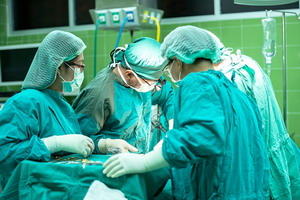 Modern medicine is slowly finding out that reliance on just anti-inflammatory drugs is not working. So many of my patients have run the gamut with what medicine has to offer. Usually, when the drugs stop working, they are offered the option of either surgery to fuse or replace the joints or burn away the nerves so
they don't feel the pain. Obviously, these procedures do not make things better in the long run. Pain clinics are popping up that see this problem and are now teaching patients meditation techniques to help them better adapt to their pain instead of just trying to block it. Yoga, gentle exercise, balance training, and core spinal strength training also help folks adapt to these chronic pain issues. And of course, patients come to see me to rebalance their muscles and bones for easier
functioning.
Modern medicine is slowly finding out that reliance on just anti-inflammatory drugs is not working. So many of my patients have run the gamut with what medicine has to offer. Usually, when the drugs stop working, they are offered the option of either surgery to fuse or replace the joints or burn away the nerves so
they don't feel the pain. Obviously, these procedures do not make things better in the long run. Pain clinics are popping up that see this problem and are now teaching patients meditation techniques to help them better adapt to their pain instead of just trying to block it. Yoga, gentle exercise, balance training, and core spinal strength training also help folks adapt to these chronic pain issues. And of course, patients come to see me to rebalance their muscles and bones for easier
functioning.
 So don't be afraid of inflammation. It is your body's way of healing itself in the short run. You don't need a lot, but some is necessary to get the job done.
So don't be afraid of inflammation. It is your body's way of healing itself in the short run. You don't need a lot, but some is necessary to get the job done.
Take care,
David
Ellen 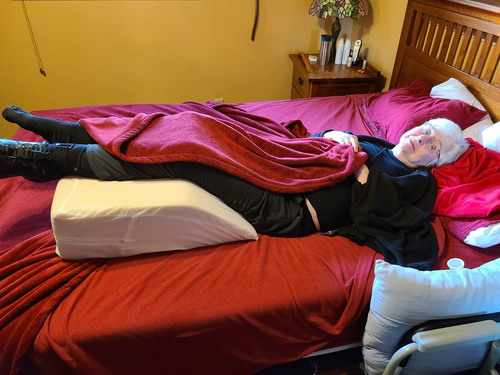
One of the issues Ellen gets to deal with since her stroke is swelling in her legs. Part of this is because of the loss of muscle function and part is from sitting all day. Periodically she has to lay down and put her feet up, and this angled bolster allows her knees to bend while keeping the feet up above her heart.
